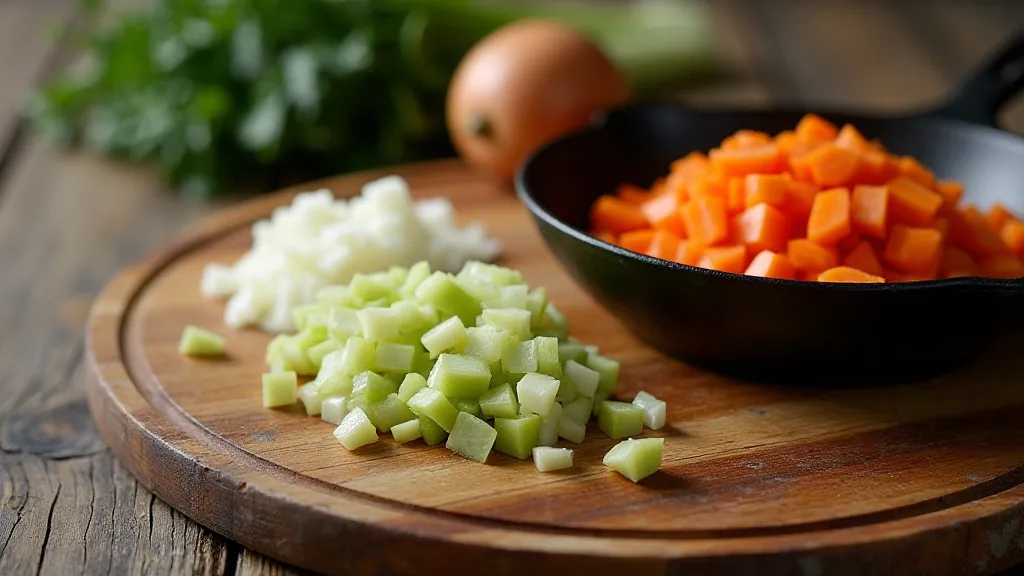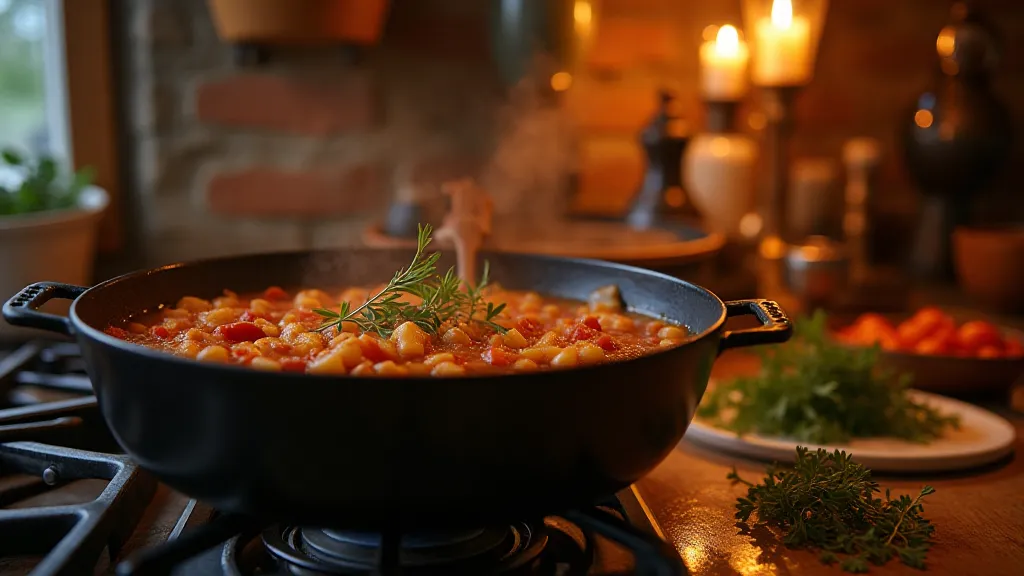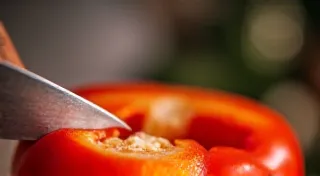The Mirepoix of Memory: Flavor Profiles and Literary Archetypes
There's a certain comfort in familiarity. It’s the aroma of a childhood kitchen, the satisfying crunch of a perfectly caramelized onion, the predictable, yet deeply satisfying, narrative arc of a well-loved story. We crave these anchors, these touchstones that reassure us amidst the chaos of existence. I’m not talking about nostalgia alone, but something deeper – a structural resonance, a mirroring of foundational elements that transcends the specific experience and speaks to something universal within us. It's a concept I've found myself contemplating increasingly while both cooking and reading – and the unlikely point of convergence? The humble mirepoix.
For those unfamiliar, a mirepoix is the aromatic base of countless French dishes: a combination of diced carrots, onions, and celery, cooked slowly in butter or oil. It’s the bedrock upon which so many iconic sauces, soups, and stews are built. Think of French Onion Soup, Boeuf Bourguignon, or Coq au Vin. The simplicity is deceptive. It’s not merely about adding vegetables to a pot; it's about understanding how their individual flavors interact, how the sweetness of the carrot balances the sharpness of the onion, how the celery lends its herbaceous backbone. It’s an exercise in balance, patience, and respect for ingredients. Much like the construction of a compelling story.

The Echoes of Structure
Consider the traditional fairytale structure: a departure, a journey, a trial, a return. It’s a framework that’s been revisited and reimagined for centuries, from Homer's Odyssey to contemporary fantasy novels. There’s a reason it works; it taps into our innate understanding of narrative progression. And what does the mirepoix represent in culinary terms? The carrots introduce a sweetness, a promise of something more. The onions provide a building block, a foundational sharpness that needs to be mellowed and developed. The celery grounds the mixture, providing depth and complexity. Each element plays a vital role in the overall flavor profile, just as each stage of a fairytale contributes to its ultimate message.
I remember my grandfather, a man of few words but incredible skill, meticulously preparing a mirepoix for his Sunday pot roast. He wouldn’t rush the process. He’s dice the vegetables with a practiced hand, a quiet concentration etched on his face. It wasn’t just about cooking; it was a ritual, a connection to generations of cooks who had used the same basic techniques to nourish their families. He’s often said, "You can't force flavor, boy. You gotta coax it out." That patience, that understanding of the slow unfolding of flavor, resonated deeply with the deliberate pacing of classic literature, where character development and plot nuances often reveal themselves gradually, rewarding the reader’s attentiveness.
The Craftsmanship of Flavor and Prose
Just as a skilled chef understands the nuances of ingredients, a writer must master the tools of their craft: sentence structure, pacing, character development, metaphor. A poorly executed mirepoix – rushed, unevenly cooked, lacking balance – results in a bland, disappointing dish. Similarly, clumsy prose, predictable plots, and shallow characters can render even the most ambitious story lifeless. The beauty lies in the details, in the small choices that elevate the ordinary to the extraordinary.
My own fascination extends to antique accordions. These instruments, often passed down through generations, embody a similar sense of craftsmanship and enduring appeal. Each button, each bellows, each hand-carved detail speaks of a dedication to artistry. They, too, have a foundational structure – a bellows that breathes life into the reeds, a series of valves that control the airflow, a keyboard that allows for the expression of a wide range of emotions. To restore one is to understand its mechanics, to appreciate the ingenuity of its design, and to connect with the musician who once poured their heart and soul into its music.

Beyond the Familiar: Variation and Innovation
Of course, the mirepoix isn't static. Chefs throughout history have experimented with variations: adding mushrooms, peppers, or other vegetables to create unique flavor profiles. Similarly, writers build upon the familiar fairytale structure, introducing new characters, settings, and themes to create stories that are both engaging and original. The key is to understand the underlying framework, to respect the foundational elements, while allowing for creativity and innovation.
Think of the concept of a “holy trinity” in cooking. The classic mirepoix is one such trinity, but there’s also the soffritto (onion, celery, and carrot, common in Italian cuisine) and the matignon (mirepoix with mushrooms and ham, often used in French bistro fare). These are not deviations from a core principle; they are evolutions, explorations of the same fundamental balance. Similarly, writers subvert expectations, challenge conventions, and push the boundaries of storytelling – all while drawing upon the deeply ingrained archetypes that resonate with our shared human experience.
The Enduring Appeal of Foundations
There’s a comforting predictability to the mirepoix. We know what to expect: a savory base for a hearty meal. We trust its reliability. We appreciate its simplicity. And it’s in this simplicity, in this unwavering commitment to foundational elements, that we find a deep sense of satisfaction, whether we’re savoring a perfectly cooked stew or immersing ourselves in a beloved story. The enduring appeal of both cooking and literature lies in our innate desire for connection – to ingredients, to techniques, to narratives that speak to our shared humanity. The next time you’re cooking, or reading, take a moment to appreciate the underlying structure, the foundational elements that give form and flavor to the experience. You might be surprised at what you discover. The quiet beauty of the mirepoix, and the enduring power of a well-told tale.






